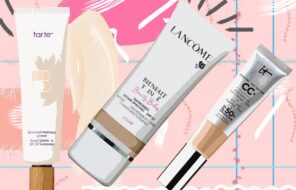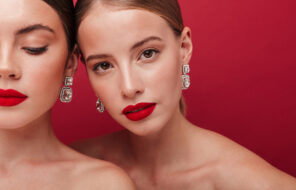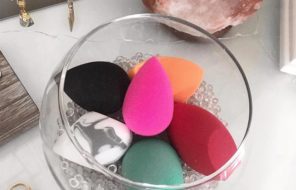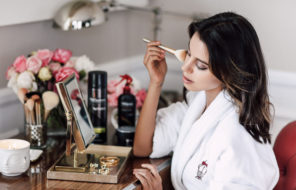- Lipsticks come in different textures, including satin and cream lipsticks, gloss, matte lipsticks, sheer and balm lipsticks, sheer lip stains, and pearl and metallic lipsticks.
- Keep your skin undertone into account when shopping for the best lipstick colors for you.
- Do preliminary research online and then try the lipsticks you are interested in in a brick and mortar store before buying it.
With so many lipstick types out there, how do you find the best lipstick for you? Some folks are avid collectors who own lipstick in every color and formula, while others have just the one or two tried and tested Holy Grails that make them look and feel amazing. If you’re still not sure what kind of lipstick wearer you are or haven’t found your favorite one yet, this lipstick buying guide is for you!
We’ll help you understand what the different lipstick types are, based on texture, formula, and finish. Then, we’ll help you figure out how to choose the best lipstick for you based on your skin tone and undertone.
We’ve got some advice for choosing lipsticks for every occasion as well. We also have some specific shopping tips for buying lipsticks both in real life and online.
In this article:
- Lipstick Types Based on Texture and Finish
- Best Lipstick Color for Your Skin Tone
- Choosing the Best Lipstick Texture
- The Right Lipstick for Each Occasion
- How to Shop for Lipstick Offline and Online
- Our Lipstick Reviews
Lipstick Types Based on Texture and Finish
Lipsticks come in a few different kinds of formulations, with different textures and finishes. Here is a quick explanation of all the major types of lipsticks, as well as their benefits and drawbacks.
Satin and Cream Lipsticks
Most bullet lipsticks (i.e. lipsticks that come in a roll-up tube) have a cream or satin finish, which offers a light, natural sheen to the lips. Historically, this has been the most common and popular lipstick category since it feels comfortable on the lips and gives them a healthy look that is not overly moist.
Satin lipsticks are usually made out of a blend of natural or synthetic waxes, oils, synthesized emollients, and pigments, which are molded into a cylinder shape that can fit in a tube. They can range in opacity from fairly low to very high.
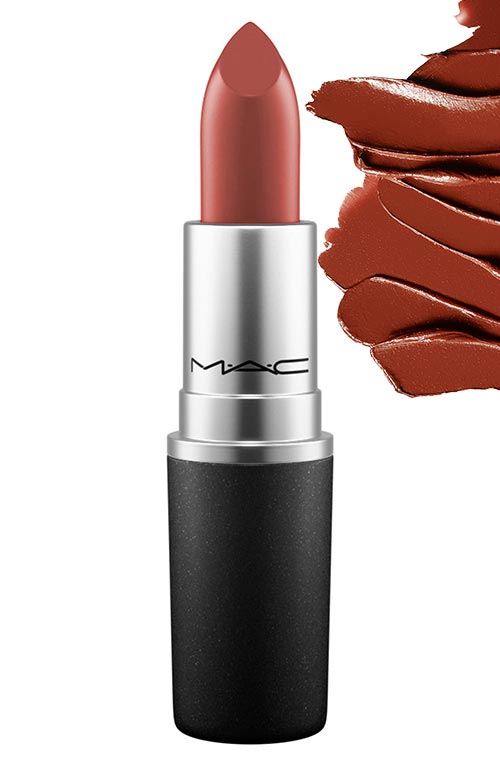
Gloss Lipsticks
Like the lipstick version of a dewy foundation, glossy lipsticks give the lips extra sheen, which makes them look bigger and more moisturized. These lipsticks tend to be very moisturizing to the lips, but they don’t have the best longevity since they slip and slide a little more.
Gloss lipsticks usually come in the form of a bullet, with a formula made up primarily of lab-made emollients that offer a lot of sheen like Diisostearyl Malate. They can also come in the form of a liquid lipstick, in a tube with a built-in brush applicator in which case they are sort of interchangeable with high-pigment lip glosses.
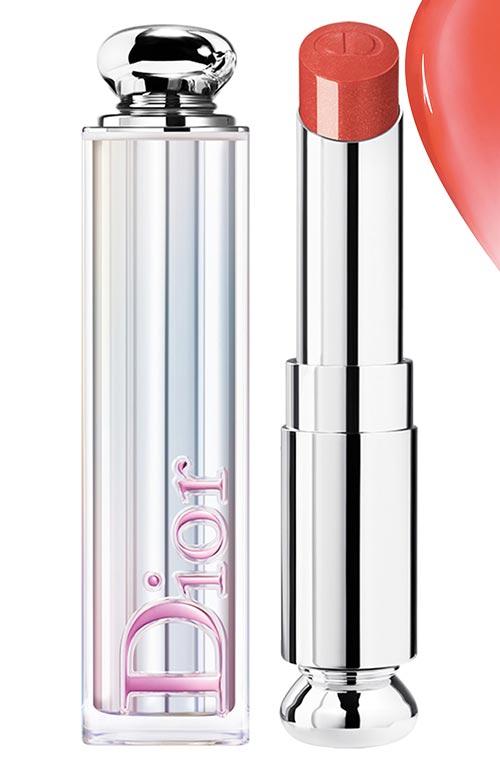
Matte Lipsticks
Matte lipsticks have become very popular in recent years. These lipsticks don’t reflect much light, so they look a little dry and flat, but they also tend to have better longevity than their satin and gloss counterparts. They can come in bullet formulas in which case they will likely have a similar wax, oil, and emollient formula but with a mattifying silicone or mineral to give a non-reflective finish.
Long-lasting matte liquid lipstick formulas are a subsection of matte lipsticks that are made with a blend of emollients and film-forming polymers that make them dry down to a difficult-to-remove and very matte layer over the lips. Sometimes they are marketed as “lip stains,” but that’s not exactly accurate. They are super long-lasting, but they often make the lips feel a little dry.
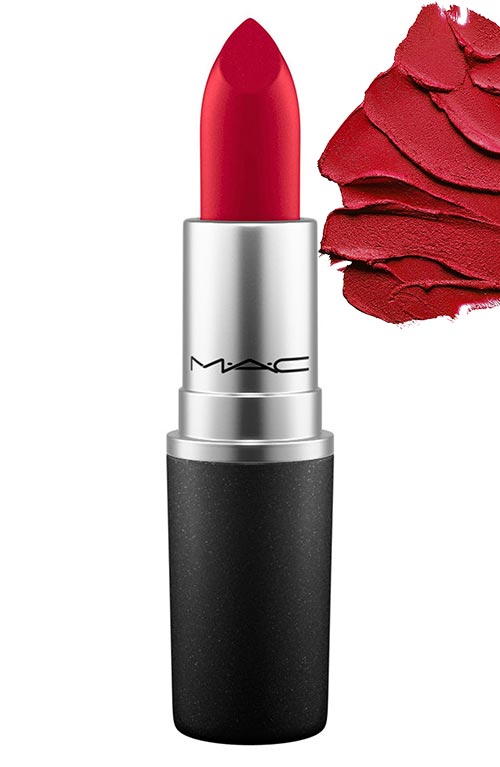
Sheer and Balm Lipsticks
Some lipsticks are made specifically to be very sheer, which means they are made with fewer pigment ingredients. As a result, they give the lips more of a tint than intense color, which gives a more natural look.
Usually, they come in a bullet, but sheer crayon lipsticks are not unheard of, either. They tend to have a creamy or glossy finish and will often also help keep the lips moisturized. They are a great choice for makeup newbies or for day-to-day casual wear.
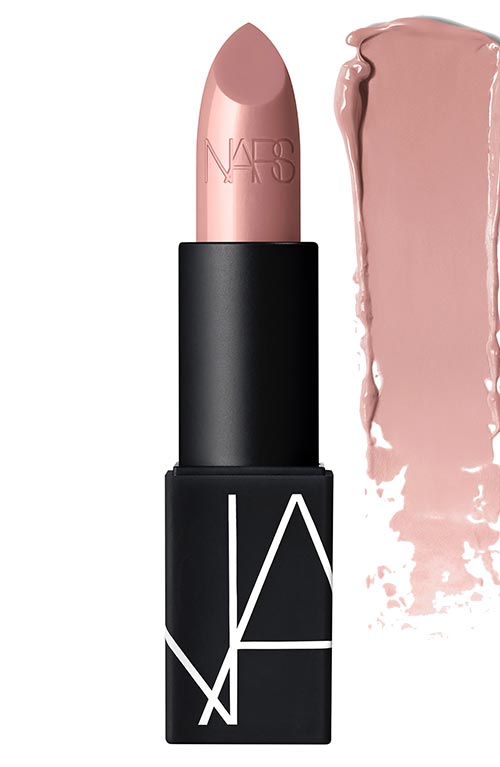
Sheer Lip Stains
Sheer lip stains deserve their own category. They are especially popular with fans of K-beauty, and a lot of Korean makeup companies make variations on them.
Lip stains usually have a light liquid, gel, or cream formula and a high amount of water, which is usually not an ingredient used in lipsticks. This allows them to spread over the lips in a thinner layer and to potentially even penetrate very slightly, so they give the lips a sheer tint from within rather than a thick coating of product and color and then to last a fairly long time.
This is great for achieving the “blooming lips” look that was first popularized in East Asia and can be a great choice for anyone who wants lip color but has sensory issues with creamier formulas.
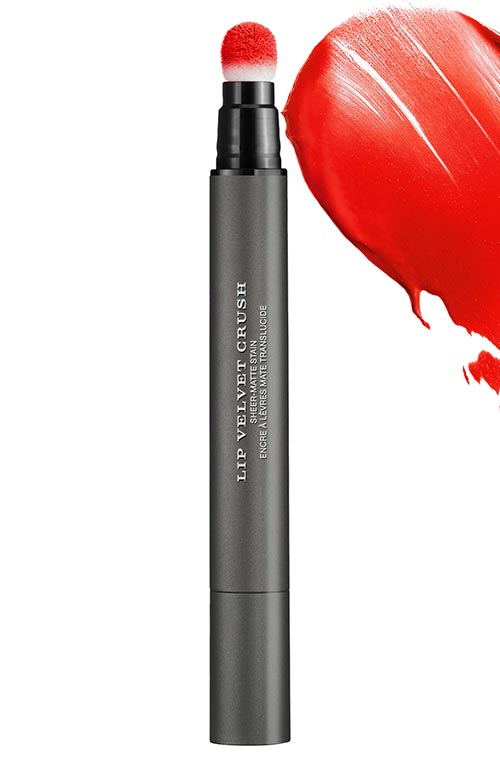
Pearl and Metallic Lipsticks
Pearl and metallic lipsticks can come with all kinds of textures, since what influences their finish is a certain type of very reflective pigment rather than a level of moisture. The reflective pigment is usually Mica, a super shiny mineral that gives a pearl or metallic finish to makeup products, but that has also come under scrutiny in recent years due to the unethical labor practices involved in mining it.

How to Find the Best Lipstick Color for Your Skin Tone
When choosing a lipstick color you will love, it’s important to keep your own skin coloring in mind, as well. As always, there are no strict rules about who can wear what, but certain undertones pair better with particular lipstick colors and are likelier to clash with others, not to mention that the overall effect of the lipstick will depend on your skin tone, as well.
How to Determine Your Skin Undertone
Understanding your skin’s undertone is very important not just for choosing the best lipstick for you, but also for choosing foundations and putting together a color story for your makeup. It can even help you figure out outfits!
Learning to recognize skin tones requires some skill. There are a few tips that can act as shortcuts, but they don’t work as well as simply learning to isolate predominant undertones through practice.
While at first glance, it seems like the skin is simply beige or brown, it’s actually more complex than that. Undertone is different from the overall skin tone. Your skin tone refers to whether your skin is light or dark, and it depends on how much melanin is in your skin – pretty simple!
The skin’s undertones are based on the primary colors: yellow, red, and on rare occasions blue. Those with predominant yellow tones have warm skin, those with predominant red (or pink) tones have cool skin, and those with a balance of the two have neutral skin.
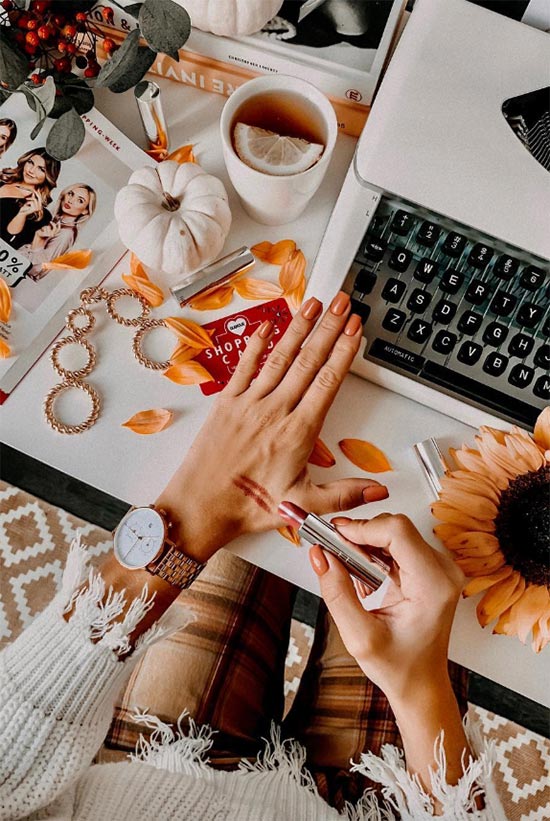
Blue undertones are very rare, and usually fall under “neutral” but olive, which is a mixture of blue and yellow undertones, can fall under either “neutral” or “warm” depending on the level of yellowness in the skin. Artists might take issue with these designations since red is considered a warm color in art, but sorry y’all, it is how it is.
Note that the face often skews a little more red (i.e. cool), and for those with sensitive skin, it can be extra deceiving. If you don’t wear foundation, that facial coloring matters a lot when you choose your lipstick, but if you are a foundation wearer, it is better to look at the coloring on your neck and chest, which will show your true undertones.
The best way to judge your undertones is to take a photograph of yourself in natural lighting against a white background. Look at the photo and try to isolate which of the three primary colors you can see the most of. Watching videos or looking at photos of other people will help train your eyes, so by learning to recognize other people’s undertones, you can also learn to recognize your own.
A common trick is to look at your veins, as a shortcut. If they appear bluer, you’re neutral, if they appear slightly purple, you are cool-toned, and if they appear greener, you are either warm-toned or olive. It’s a great trick, but it’s not foolproof, and it might not work at all if you have a deeper skin tone through which the veins are not visible.
Best Lipstick Colors for Cool Undertones and Fair Skin
If you have a cool, pinkish undertone, you want lipstick colors that will make your skin look healthy and clear by pulling it to a more neutral place or by working with it rather than against it. The most consistently flattering lipsticks for your skin tone will be either neutral or a little cool-toned.
Nudes that are neither orange nor pink can look stunning, as can slightly deeper rose and berry tones, which will register as your “my lips but better” shade. If your skin is darker, but with a cool undertone, taupe and cool brown lipsticks can register as nudes and look incredibly chic. If you’re in the mood for drama, pinks, magentas, blue-based reds, and deep purple-red burgundies are all excellent choices.
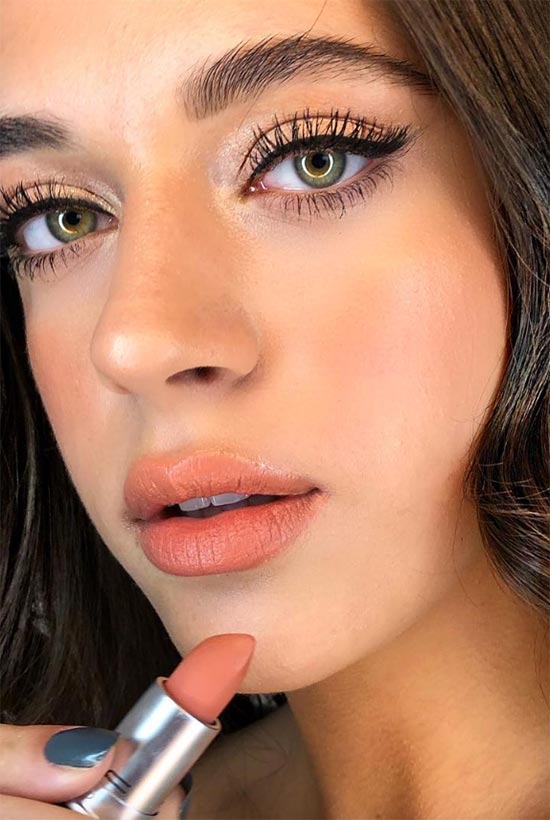
If you’re a fan of avant-garde colors, don’t be afraid of blue and purple lipsticks, but stay away from yellows and especially greens, which will only serve to emphasize any redness in your skin.
You’re not totally banned from wearing orange-based lipsticks (we don’t believe in banning!), but to make them work it will be better if your skin is perfected with foundation and if the rest of your makeup’s color story is cohesive, with warmer eye makeup and blush or bronzer.
Best Lipstick Colors for Warm Undertones
If your skin is very warm with a lot of yellow, it’s better to stay away from lipsticks in the purple color family. Yellow is opposite purple on the color wheel, so purple tones will really emphasize the yellowness in your skin. If your skin is only moderately warm, however, then warmer purples like plum and magenta will look vibrant, and the contrast will be flattering rather than extreme.
Instead, neutral and warm-toned shades tend to work best. Your “my lips but better” shade will likely be a soft, warm rose or a brick red muted with a bit of brown. In general, brick reds, peaches, corals, and even colors in the brown and burgundy family can look fantastic.
True orange is a difficult lipstick color to wear since it can make the teeth look a little yellow, but if you’ve got a bright and lively flare, you can definitely give it a try.
For drama, true reds and slightly warmer tomato reds tend to be the most flattering, although the contrast of yellow skin and blue-based red lipstick is not extreme, so they are not necessarily a bad choice either.
Best Lipstick Colors for Neutral Undertones
Figuring out that you have a neutral undertone to your skin can be difficult, but the magical result is that you look incredible in nearly all lipstick shades. Warm and cool-toned lipsticks alike will sit nicely against your balanced skin, so the only thing to keep in mind is the darkness level of your lipstick, as well as how it will pair with the rest of your look.
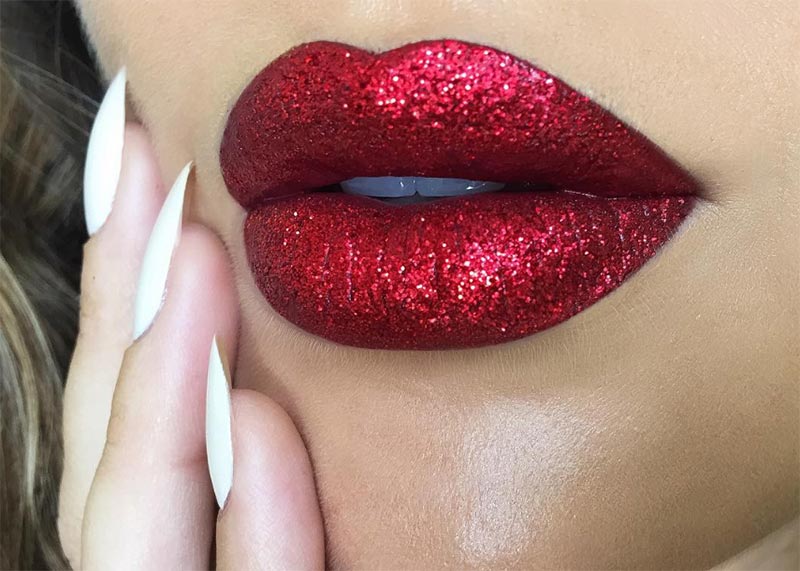
Best Lipstick Colors for Olive Undertones
Olive skin, which is a skin type that has just enough blue undertones in it to register as a little green, is probably the most under-served and oft-ignored of the undertones. Olive skin tones can lean either towards warm or neutral, and they have difficulty with very saturated lipsticks or lipsticks that have too much white pigment in them, as those can pull gray.
The best lipsticks for those with olive undertones are muted with neutral or very slightly warm leanings. Roses, berries, and most nudes can look very pretty, as long as they have a good balance between purple and orange.
True red lipsticks are the main struggle for those with olive undertones since red tends to bring out that greenishness. The key is to avoid “true reds” altogether and instead lean into the more blue-based reds or warm reds, depending on the kind of oliveness your skin has.
Neutral olive skin tones with a lot of blue will benefit from cool, blue-reds, while warm yellow-olive skin tones will benefit from more muted reds with a slight warmth. Warm olive undertones also benefit from staying away from purple-based shades like lavender, plum, and mauve.
Lipsticks for Light vs. Dark Skin
Whereas choosing lipstick based on undertones can be complex, choosing lipsticks based on skin tone is considerably easier. Traditionally, lipstick should be a few shades darker than one’s skin tone, as that allows the lips to stand out the best.
Lipsticks that are the same darkness level as the skin tone or even lighter became trendy in the ‘60s, and since then wearing light lipsticks has gone in and out of style again and again. In general, wearing lipstick that is multiple shades lighter than your skin tone is going to look a little odd, and likely won’t flatter unless your entire look is avant-garde.
- Those with fair skin tones look best in peachy, pink, and red lipstick shades. You can also experiment with vivid and bold shades, while yellow-leaning and pale shades might wash you out.
- Medium, tan, and olive skin tones are the most versatile when it comes to choosing a lipstick color, so you can wear anything, from orange to red to nude.
- Darker skin tones pair perfectly with deeper tones, like purples or mauves. Generally, try to avoid very light and pale lipstick shades.
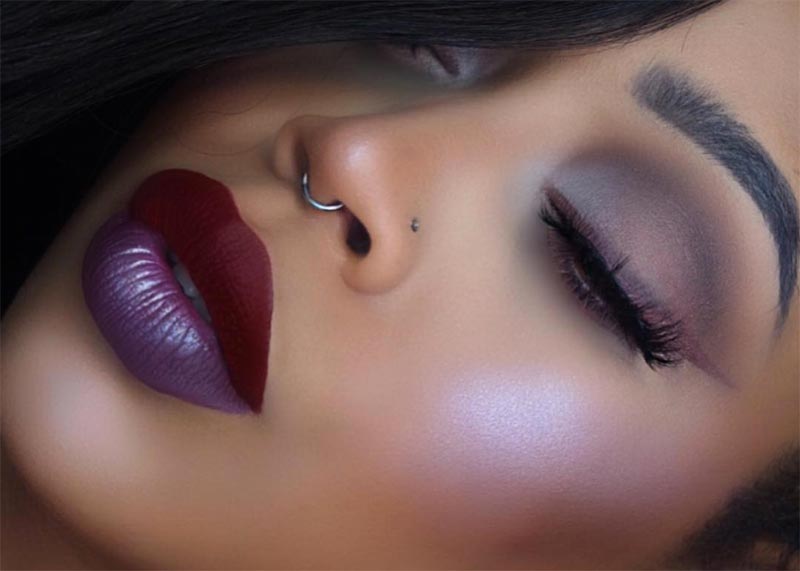
For those with very fair skin, darker lipstick shades like wine, burgundy, brown, and sometimes even plum or brick can look too dark. They can work if applied as a statement color, with the rest of the makeup kept clean, and sometimes that high-contrast look becomes very fashionable, but it’s rarely the most flattering lipstick option and makes for a poor staple.
The makeup world also has a shameful colorist history, where the needs of people of color have been totally ignored. For instance, a lot of lipsticks are made with some white pigment, which makes them lighter but can also register as chalky for those with darker skin.
For women of color, it’s important to choose lipsticks that are very saturated with primary pigments and are low on white fillers. By swatching a lipstick on your hand, you can usually tell exactly how well it has been formulated.
Choosing the Best Lipstick Texture for You
If you have very dry lips, finding a good lipstick that doesn’t emphasize dry patches or make your lips feel parched can be difficult. You will probably want to avoid matte lipsticks altogether, or at least reserve them for days when you have time to really exfoliate and moisturize your lips first.
For a day-to-day basis, it’s better to choose moisturizing lipstick formula with either a glossy or satin finish. Sheer lipsticks and balm formulas will usually give your lips the most moisture, so they’re an easy choice for daily use.
If your lips are naturally quite hydrated or if you’ve already found your ideal lip care routine, then you can enjoy all lipstick formulas, from the most matte liquid lipstick to the creamiest, glossies lipstick.
Deciding on the Right Lipstick for Each Occasion
Technically, there are no rules dictating which lipstick type can be worn to which event or situation. Trends change from season to season and year to year, not to mention that personal style and the rest of your makeup should also hugely influence lipstick choice. Because of that, while we give some tips for choosing the right lipstick for each occasion, we also encourage creativity and rule-breaking!
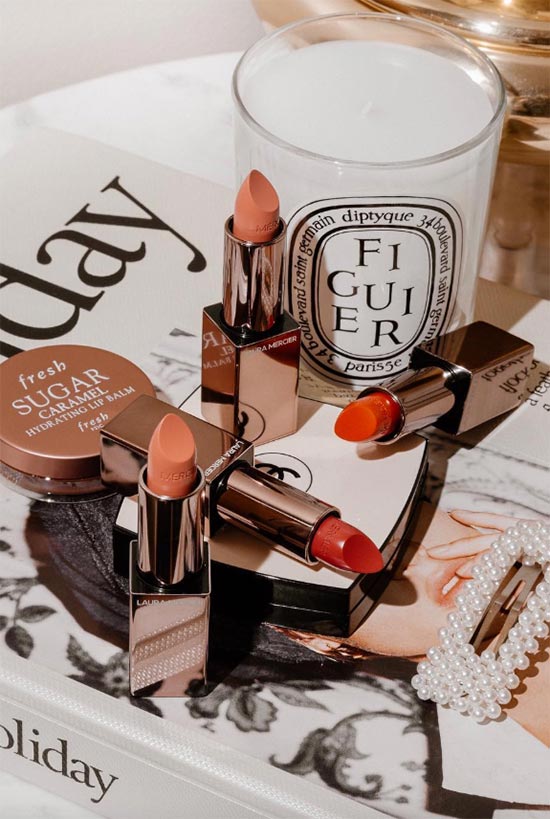
Lipsticks for Casual Days
Casual situations are either a great time to keep things simple and easy or they can be your chance to get a little bit experimental.
- Sheer, balm-esque lipsticks are great for a quick, easy application that will make your lips feel amazing. Choose a neutral-colored formula that is close in shade to the natural color of your lips or one that is just a bit of a warm or cool tint, depending on your skin tone.
- There is no bad time to wear a creamy “my lips but better” lipstick, so that’s another great option.
- If you’re intrigued by unusual lipstick colors, we’re of the opinion that certain casual situations like a trip to the mall or lunch with friends (as opposed to a grocery store run or a gym session) are the perfect chance to experiment. After all, the stakes are low, so you may as well have fun! Break out that teal you’ve been dying to try or experiment with a bold new texture.
Lipsticks for Professional Environment
At work, especially if you work in a business environment, you will likely want to keep things a little bit more conservative with your lipstick choice.
- Satin and matte textures are going to be the most elegant and classiest options.
- When in doubt, break out that natural berry shade that looks like your natural lip color.
- Avoid lipsticks that fade awkwardly and require careful reapplication – choose either light formulas that fade away seamlessly or long-lasting stain or liquid lipstick formulas instead.
- If you’d like to wear a nude lipstick, make sure it’s a shade or two darker than your skin tone, if you have a fair-medium skin tone, while if your skin is deeper, a nude that matches your skin tone is a good fit.
- Super vivid lipstick colors like bright red, hot pink, or fuchsia are not a great idea, but more muted versions of them like brick, mauve, berry, or a cool dusty red can work.
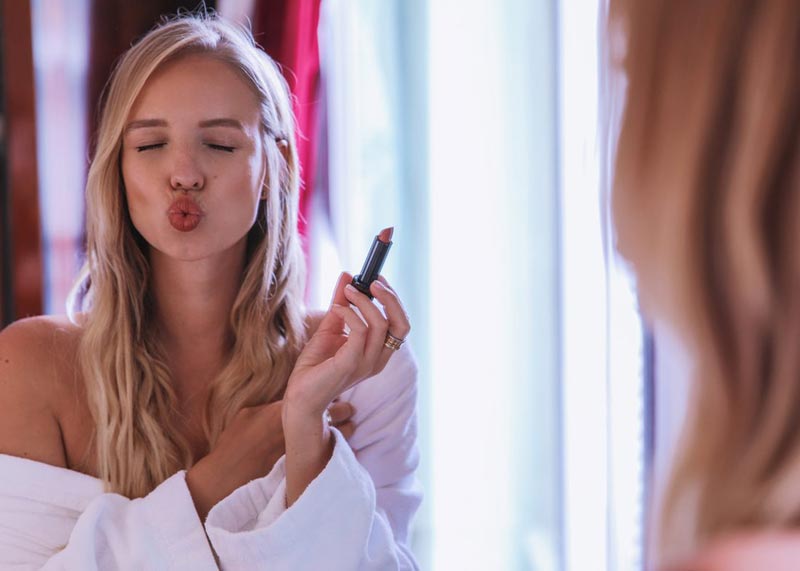
Lipsticks for Nights Out
When you’re going out dancing, to a bar, to a pop or rock concert, or heading out to a party with your friends rather than colleagues or family, you can have a lot of fun with your lipstick!
- This is your chance to wear vivid lipstick colors, especially if you’re going to be in a dark environment where more muted colors will be hard to spot.
- Dark lipstick can be really fun, and for these kinds of occasions, you can often break the rules by having both your lips and eyes stand out.
- Ultimately, the rules are not strict here! If you like nude, natural lipsticks, that’s okay too. You don’t have to go all out.
Lipsticks for Special Events
For slightly more upscale special events like weddings, galas, and industry parties, you want to strike a balance in your makeup between classy and dramatic.
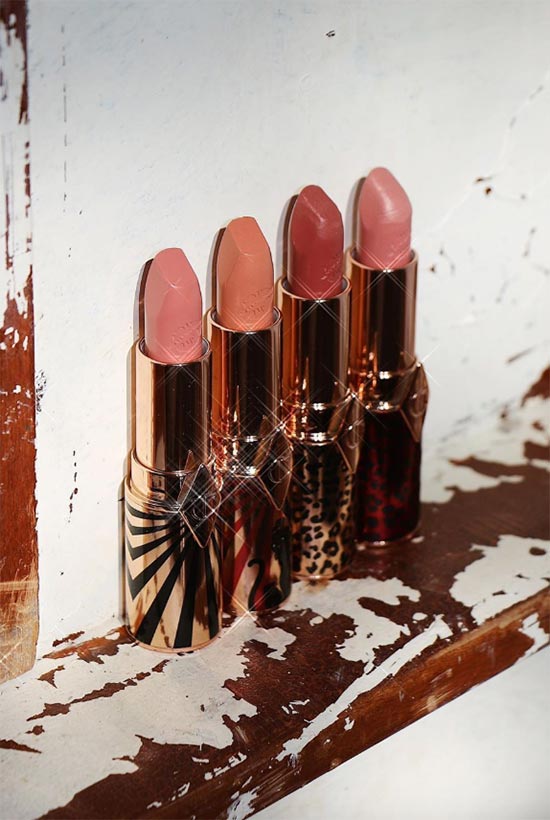
- In this instance, your lipstick choice should depend heavily on the rest of your makeup. This is not the time for combining dark eyes with dark lips, for instance.
- If you’d like to look as elegant and mature as can be, it might be better to strike a balance with a slightly deeper berry, rose, or brick lip color and more prominent than usual but still subtle eye makeup.
- On the other hand, if you want to turn heads, red lipstick is the most glamorous of all color choices.
- Nude lipstick can actually work really nicely at special events, but it’s important that it be paired with slightly darker eye makeup.
How to Shop for Lipstick Offline and Online
When shopping for lipstick, it can be great to have access to the real, actual product in a brick and mortar store. Unfortunately, sometimes going to a store for lipstick isn’t an option, since it’s either not available in your area, your mobility is limited, or the stores around you offer limited testers.
The best scenario is having access to both! You can do preliminary research online to try and narrow down the lipsticks you are interested in, and then go to the store and see those lipsticks in real life.

Shopping Offline
Here are our tips for shopping for lipsticks offline, where you have access to testers.
- Making your own swatches is the best way to see how a lipstick performs. You can swipe a few lipsticks on the back of your hand or your arm to see their colors, undertones, pigmentation level, opacity, texture, and finish.
- If the stores are well-equipped, it’s even better to try the lipstick on your lips in the store. Lipstick won’t look the same on your lips as it does swatched on your hand, so it’s better to really try it on before you buy it. This is usually easier at luxury makeup stores that are equipped with spatulas for cleanly scraping off the lipstick and disposable brushes for application. You can ask a sales consultant to help you.
- If you can, wear the lipstick for a few hours before committing to buying it. For instance, you can start your day at the makeup store to try on testers, and then continue shopping for a few more hours before returning to the store. This will allow you to see how well it lasts and how it makes your lips feel. You can also look at it in different lighting to determine if it truly is flattering.
- Even if you’re shopping on a whim, the Internet can still be extremely helpful! If you see a lipstick you like in the store, you can look up its name along with the word “reviews” to see what other people have to say about it.
Shopping Online
Whether you intend to make your final purchase online or offline, these are our research tips for shopping for lipstick online.
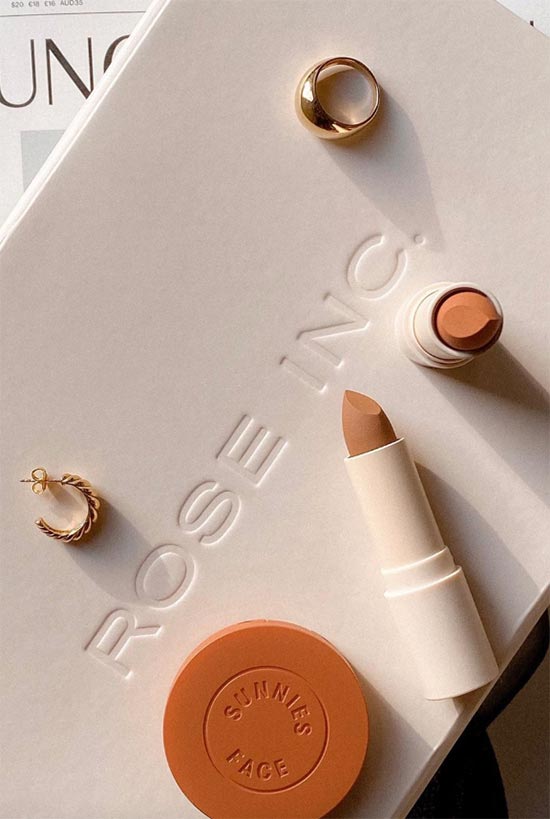
- The hardest part about shopping for lipstick online is knowing exactly what the color will look like in real life. These days, lipstick brands will usually disclose the undertones and darkness level of a lipstick in the product description, and they will also give swatches. Have a look at what the brand offers, but don’t stop there since that’s rarely enough information.
- In addition to brand-provided swatches, you should also look up the name of lipstick and the word “swatch” in a search engine. This will show you more examples of how the color looks when swatched in a variety of different lighting and camera situations. We’re big fans of the thorough swatches on Temptalia.
- Knowing what the color looks like will help, but if you’re new to buying lipsticks, that might not be enough to tell you if it’ll flatter you. One thing that might help is checking an influencer, blogger, or YouTuber whose skin tone, undertone, and hair color are similar to yours. You can rely on them as your “guinea pig” since you’ll know that if a lipstick looks good on them, it will likely suit you as well.
- Reading reviews is also very helpful! Reviews can tell you more than just whether a product is good or bad – they can also tell you the nuances. If you want a lipstick that will be very sheer, light, and natural, a negative review that complains that the lipstick isn’t opaque enough could actually be a sign that that particular lipstick will work for you. Read a variety of reviews from different websites so you can get a very good understanding of everything about the lipstick, including its color, opacity, longevity, and texture.
- A lot of companies have released applications that allow you to try makeup on “virtually.” Unfortunately, the truth of the matter is that at the moment, most of them kind of suck. The apps can’t take into account how a lipstick will look over your natural lip color, and often the coloring is off in general because of screen resolutions and lighting. They can still be fun around to play with, but don’t give their results too much credence when shopping for lipsticks online.
Our Lipstick Reviews
Looking for the best lip color for your personal style or mood? Check out our best reviews on the following lip trends:
- Best Lipsticks of All Time
- Best Lip Primers
- Best Long-Lasting Lipsticks
- Best Lip Stains
- Best Lip Plumpers
- Best Lip Glosses
- Best Lip Liners
- Best Powder Lipsticks
- Best Liquid Lipsticks
- Best Matte Liquid Lipsticks
- Best Nude Lipsticks
- Best Pink Lipsticks
- Best Red Lipsticks
- Best Holographic Lipsticks
- Best Burgundy Lipsticks
- Best Metallic Lipsticks
- Best Brown Lipsticks
- Best Black Lipsticks
- Best Purple Lipsticks
- Best Orange Lipsticks
- Best Fall Lipsticks
- Best Glitter Lipsticks
- Best MAC Lipsticks
- Best MAC Nude Lipsticks
- Best MAC Matte Lipsticks
- Best Chanel Lipsticks
- Best NYX Lipsticks
Photos via @daryna_barykina, Instagram


